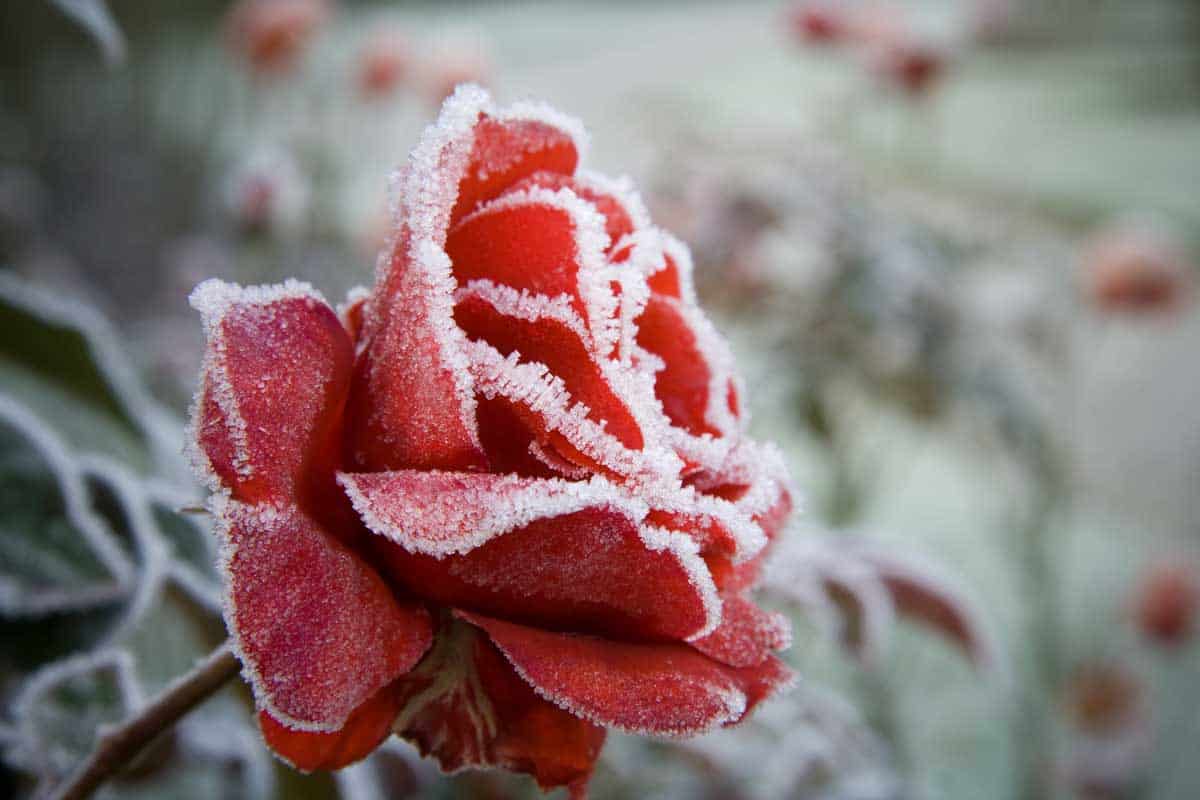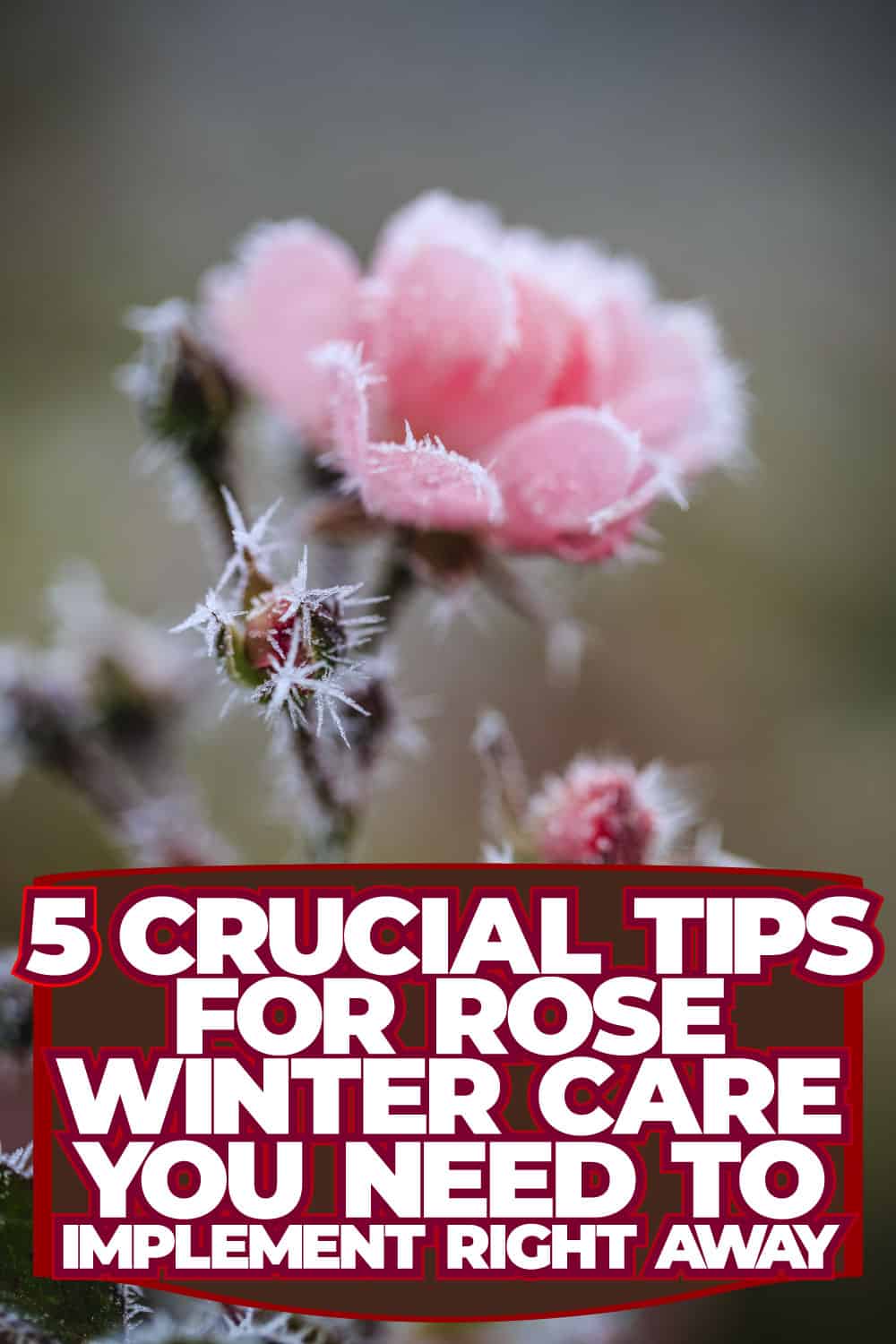There is no flower more iconic than the rose. This flower has been treasured and cultivated by humanity for centuries. It has been used as a symbol of love, beauty, and perfection.
Over 150 species of roses are propagated throughout the world, and they have many uses. When it comes to maintaining roses, you might be wondering how to care for them during winter. We've done the research to give you the answer.
Follow these steps to care for roses during winter:
- Get roses to naturally return to a dormant state. Stop feeding them and prune them to discourage new growth.
- Remove any dead or diseased leaves and anything that can help insects or fungus harm your roses.
- Climbing roses should have trellises and poles removed to protect against damaging winds and be secured.
- Add a protective layer of mulch and a mound of shredded leaves or bark for insulation.
- Make sure the soil has been thoroughly watered after the first frost so the rose has enough to last before the big freeze.
If you still have lingering questions about caring for roses during the winter, don't worry. Keep reading and learn more about safeguarding roses over the long, cold winter, so that they may bloom again once spring arrives.
Rose Winterizing Guide
Depending on the zone in which you live and the types of roses you are growing, you may need to slightly change how you prepare your roses to survive the winter.
Shrub roses are pretty tough, but hybrid types of roses may need extra care if you live under zone 6.
If you live in a zone where winters bring plenty of rain instead of frigid temperatures, look out for fungus, and feed the roses as necessary.
Follow these steps to properly winterize your roses.
Stop Feeding
It's important not to cover up roses too early. First, you will want to encourage your roses to go into a dormant state. Stop fertilizing your roses by August 15 to help retard their growth. By the first of October, it is best to cease cutting roses and dead-heading because you want the roses to form hips.
Remove Dead Or Diseased Leaves
Before preparing your roses for winter, make sure that the temperatures have stayed in the teens consecutively for a few days, or a hard frost has caused most of the plant's leaves to fall off.
Do some cleaning house, and make sure to remove any unwanted debris, dead leaves, and anything that could encourage rot, fungus, insects, or parasites to thrive and kill the rose. It is okay to do some pruning, but most of your pruning maintenance will take place in spring.

Add A Protective Layer
Remember, when you are protecting roses you want to prevent prolonged wetness and cold. Pile loose compost, soil, shredded leaves, or bark around the base of the rose.
Another alternative is to place a protective barrier around the plant using chicken wire, fill in the open space with soil, allow it to freeze, and then add a layer of insulating straw.
Remove Trellises And Poles
Climbing roses that are subject to very cold temperatures, rough winds, and subsequent damage from the weather should be placed carefully on the ground and removed from their supports. Care should be taken that the stems do not crack, and they can be cocooned in burlap or packed with straw for insulation.
Fear not! Rose plants that are healthy, well cared for with fertilization, watering, and proper insulation materials have a better chance of surviving the chilly temperatures of winter versus roses that are deficient in nutrients or have suffered disease. Keep in mind that a dry and cold environment is better than a wet and cold one for roses.
Do Roses Survive Frost?
Yes, it is possible for delicate roses to freeze when temperatures plunge below 32 degrees Fahrenheit. But, if you offer modest winter protection for roses, such as piling on mulch and watering and fertilizing before roses go dormant, they can withstand temperatures that hover above 20 degrees Fahrenheit.
Roses can survive frost provided they have some cover for insulation. Roses in zones where extreme subfreezing temperatures are constant may not have an easy time outdoors, despite protection.

Check out this organic fertilizer on Amazon.
Do Roses Need to be Covered In The Winter?
Roses do not necessarily need to be completely covered in the winter. Gardeners can choose to create a protective circle using stakes and fabric or wire and fill in the space surrounding the rose with mulch or compost, and top it with shredded leaves, straw, or bark to provide insulation.
Another option is to cover plants with a rose cone to protect against cold and vicious winds. Some gardeners may feel it is necessary to cover the stems or canes of climbing roses with burlap during the winter.

Check out this handy rose cone on Amazon.

Check out this mulch for winterization on Amazon.

Check out this durable burlap fabric on Amazon.
Can I Cut My Rose Bush To The Ground?
Gardeners do not need to cut a rose bush to the ground to protect the plant against frigid winter temperatures and bitter winds. Instead, a rose bush can be protected enough to survive the winter by covering the bottom of the bush with compost soil, mulch, straw, or shredded loose leave to protect the roots from rot and freezing. Give a rose plenty of fertilizer before it is time to prepare the plant for winter.
Allow a rose bush to develop rosehips, which will naturally encourage a rose bush to enter a dormant state. Remember, don't cover up a bush too early. Wait until the first frost hits and helps remove most of the leaves first. Cutting a rose bush to the ground may lead to a long wait for a rose plant's return. Doing some modest pruning as needed is perfectly fine, but no need to go to extremes.

Check out these quality pruning shears on Amazon.

Check out these gardening gloves on Amazon.
Do Roses Come Back Every Year?
There are many varieties of roses, and some types do only bloom for one year. Most roses will return when spring and summer arrive after resting during their dormant period over winter. If you choose a variety of rose that comes back every year, care must be taken to prevent disease, root rot, and damage from water and cold over the winter so they will bloom for many years to come.
Before you go, be sure to check out these other gardening guides that might be of interest:

